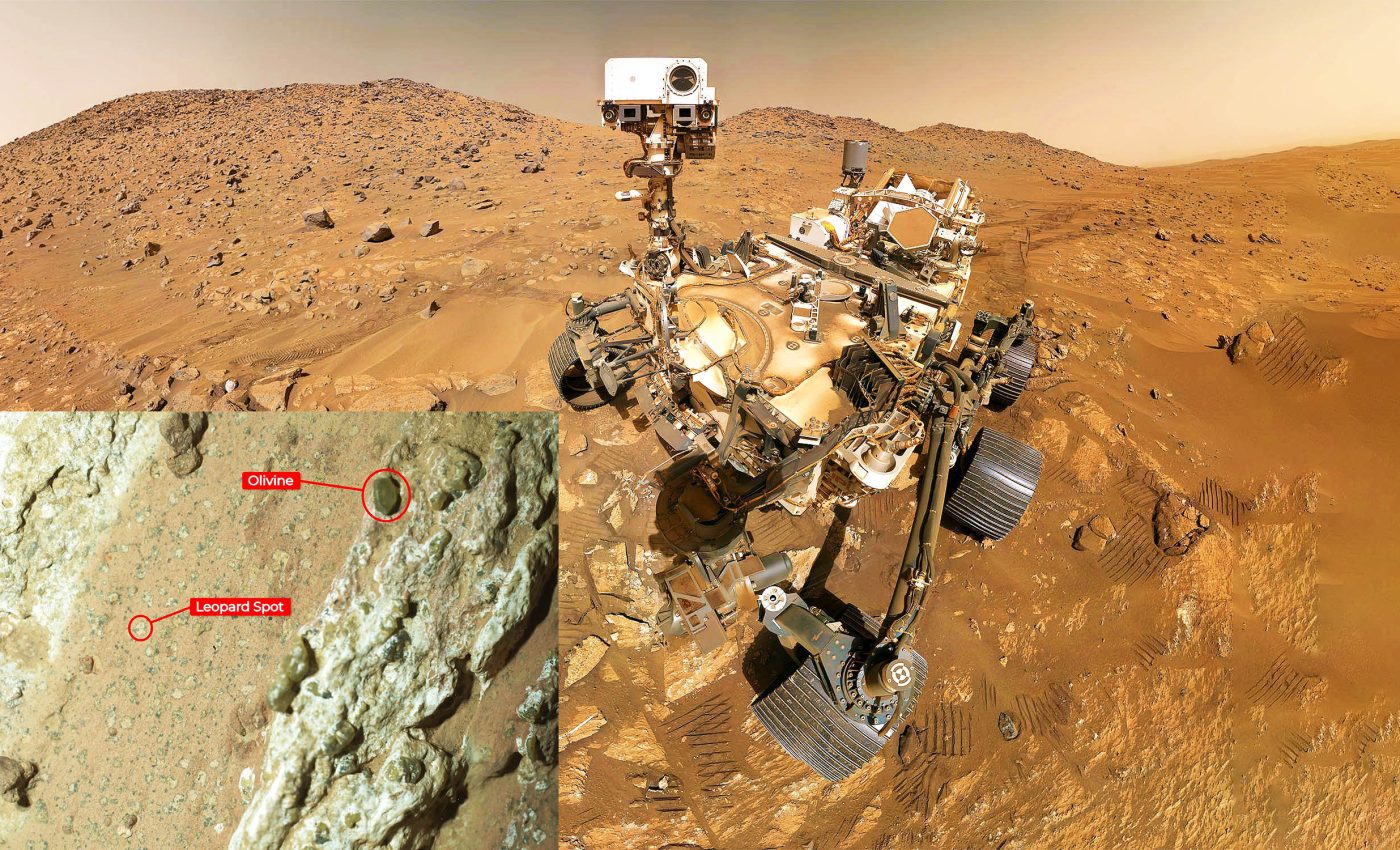
NASA: Perseverance rover finds best evidence yet for life on Mars
Thought Mars was just a barren, rusty desert? Well, it may be time to rewrite the science textbooks. NASA’s Perseverance rover has thrown us a curveball, a potentially discovering remnants of microbial life in a rock on Mars that may revolutionize our understanding of life beyond Earth.
Enter the ‘Cheyava Falls’ — an oddly intriguing rock discovered on Mars, bearing tantalizing hints pointing towards the possibility of ancient microbial life.
“We have designed the route for Perseverance to ensure that it goes to areas with the potential for interesting scientific samples,” explained Nicola Fox, associate administrator, Science Mission Directorate at NASA Headquarters in Washington.
“This trip through the Neretva Vallis riverbed paid off as we found something we’ve never seen before, which will give our scientists so much to study.”
Life on Mars in Cheyava Falls rock?
Located on the northern edge of the Neretva Vallis, an ancient Martian river valley, the Cheyava Falls rock is unique. Its characteristics have tickled the curiosity of scientists and have led to the detection of organic compounds within it.
The rover’s scientific instruments, including SHERLOC (Scanning Habitable Environments with Raman & Luminescence for Organics & Chemicals), have detected organic compounds within the rock.
These compounds, considered the building blocks of life, raise the tantalizing possibility that Mars may have once harbored life.
“This is the kind of key observation that SHERLOC was built for — to seek organic matter as it is an essential component of a search for past life,” enthused SHERLOC’s principal investigator Kevin Hand of NASA’s Jet Propulsion Laboratory (JPL) in Southern California, which manages the mission.
Extraordinary rock in Jezero Crater
Cheyava Falls is no ordinary rock, as described by Ken Farley, the Perseverance project scientist from Caltech, “the most puzzling, complex, and potentially important rock yet investigated by Perseverance.”
This unusual rock sports several intriguing features including colorful spots that hint at chemical reactions, evidence of past water flow, and the presence of organic material.
These elements, in combination, suggest that Cheyava Falls may be a link to Mars’ ancient past and its mysteries.

“On the one hand, we have our first compelling detection of organic material, distinctive colorful spots indicative of chemical reactions that microbial life could use as an energy source, and clear evidence that water — necessary for life — once passed through the rock,” Farley expounded.
“On the other hand, we have been unable to determine exactly how the rock formed and to what extent nearby rocks may have heated Cheyava Falls and contributed to these features.”
Building blocks of life in Mars’ Cheyava Falls rock
The rock features large white veins of calcium sulfate running along its length. Between these veins are reddish bands, indicating the presence of hematite, a mineral that contributes to Mars’ characteristic rusty color.
Upon closer inspection, Perseverance discovered numerous irregularly shaped, millimeter-sized off-white splotches surrounded by black material, resembling leopard spots.
Using the PIXL (Planetary Instrument for X-ray Lithochemistry) instrument, Perseverance found that these black halos contain iron and phosphate.
What adds another layer of complexity to the mystery is the presence of iron, phosphate, and possibly hematite — minerals often linked to biological processes.

David Flannery, an astrobiologist from the Queensland University of Technology, chimes in, “On Earth, these types of features in rocks are often associated with the fossilized record of microbes living in the subsurface.”
This discovery has sparked a flurry of questions and hypotheses.
Was Cheyava Falls the result of mud with organic compounds hardening into rock, with subsequent fluid flows depositing the calcium sulfate veins?
Or could the olivine crystals in the veins actually be magma remnants, suggesting a wholly different formation process?
Returning Rocks: A Giant Leap in Space Exploration
To crack this Martian mystery, the scientific community needs more than just remote data.
“We have zapped that rock with lasers and X-rays and imaged it literally day and night from just about every angle imaginable,” Farley concluded.
“Scientifically, Perseverance has nothing more to give. To fully understand what really happened in that Martian river valley at Jezero Crater billions of years ago, we’d want to bring the Cheyava Falls sample back to Earth, so it can be studied with the powerful instruments available in laboratories.”
The return of Martian samples marks a significant milestone in planetary science. With these samples on Earth, researchers can use advanced technologies to examine the rock’s composition, structure, and potential biological signatures more closely.
This could finally answer questions about the presence of ancient life on Mars.
Uncharted territory: Where do we go from here?
As the Perseverance mission ventures further into the Martian landscape, we wait with bated breath for the next reveal. Its methodical, inch-by-inch exploration adds to our knowledge about Mars’ past and its potential to support life.
The Cheyava Falls discovery has brought with it an exhilarating mixture of challenges that scientists are chomping at the bit to solve.
Whether or not life ever existed on Mars, the contributions of the Perseverance and future missions will continue to enrich our understanding of Mars and the wider cosmos.
As we delve deeper into the Martian mysteries and set our sights on other celestial bodies, we can expect to uncover more secrets about our solar system’s history and the potential for life beyond Earth.
So, the next time you’re stargazing, remember: The universe is full of mysteries, and we’ve only just started the journey. Imagine what we’ll find next!
—–
Like what you read? Subscribe to our newsletter for engaging articles, exclusive content, and the latest updates.
Check us out on EarthSnap, a free app brought to you by Eric Ralls and Earth.com.
—–













